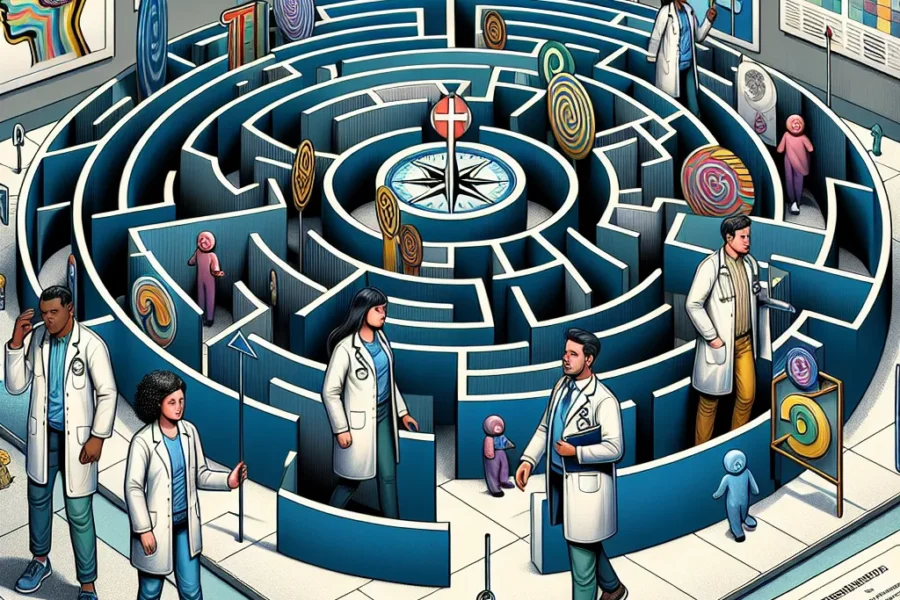Understanding the intricate relationship between neuroscience and personality is akin to embarking on an adventurous journey into the brain’s labyrinthine structure. As we unravel the mysteries of the mind, we inch closer to grasping how our personalities are woven into the very fabric of our neuronal connections.
The quest to comprehend the role of the brain in shaping personality has long fascinated scientists, psychologists, and the intellectually curious. In the sprawling landscape of human variation, the brain stands as the unparalleled maestro, orchestrating the symphony of traits that make each individual unique.
Personality, a complex and multifaceted construct, comprises emotional patterns, thoughts, social interactions, and behaviors that distinguish one individual from another. Theoretical models such as the Big Five–which includes openness, conscientiousness, extraversion, agreeableness, and neuroticism–provide frameworks to categorize these traits. Neuroscience, equipped with sophisticated imaging technology and ever-evolving theoretical understanding, endeavors to link these abstract qualities to concrete neurological processes.
Central to the brain’s role in personality is the structure known as the prefrontal cortex (PFC). This cerebral region is the seat of executive functions, including decision-making, self-control, and social behavior. Variability in the size, connectivity, and activity of the PFC has been correlated with differences in conscientiousness and impulsivity. Individuals with a more active PFC are often more deliberate and self-disciplined, while a less active PFC may be associated with impulsiveness and risk-taking behaviors.
Another key player in the brain-personality nexus is the amygdala, a small, almond-shaped structure deeply embedded within the brain’s medial temporal lobe. The amygdala is primarily recognized for its pivotal role in processing emotions, particularly fear and pleasure. Research indicates that the amygdala’s reactivity is associated with traits like neuroticism and extraversion. A highly reactive amygdala may predispose an individual to anxiety and stress, while a less reactive one can be linked to a more easygoing and sociable disposition.
The neurotransmitter systems within the brain also provide essential clues to the foundations of personality. Dopamine, often dubbed the “feel-good” neurotransmitter, plays a significant role in reward-seeking behavior and motivation. Variations in dopamine receptor density and the efficiency of dopamine pathways have been suggested to influence traits such as novelty seeking and extraversion.
Similarly, serotonin, a neurotransmitter vital in mood regulation, has been extensively studied for its connection to personality. Lower levels of serotonin transmission have been associated with traits like impulsivity and aggression, while higher levels contribute to feelings of well-being and emotional stability.
Further insights into the brain’s role in personality have been gleaned from studies of brain plasticity. Our neural circuits are not static; they are remodeled by our experiences throughout our lives. This neuroplasticity suggests that while certain personality traits might be innate, others can be shaped by the environment and our interactions with it. Thus, the brain is an ever-changing landscape molded by both genetic endowment and life experiences.
Advances in neuroimaging techniques like functional magnetic resonance imaging (fMRI) and positron emission tomography (PET) scans have unlocked new vistas in understanding the relationship between brain regions and personality. fMRI studies, for instance, reveal the real-time activation of different brain regions during tasks that require certain personality traits, such as risk-taking or problem-solving. This technology has shed light on the dynamic interplay between brain function and the expression of personality traits.
Individual differences in brain structure have been illuminated by the use of diffusion tensor imaging (DTI), which examines the flow of water in brain tissue and provides information about white matter connectivity. White matter is composed of myelinated nerve fibers that facilitate communication across different brain regions. Studies employing DTI have linked higher structural connectivity with traits like intelligence and emotional stability.
Neuroscience also intersects with the study of genetics to unravel the hereditary components of personality. Twin and familial studies have attributed a significant proportion of personality variance to genetic factors. The burgeoning field of behavioral genetics employs genome-wide association studies (GWAS) to identify single nucleotide polymorphisms (SNPs) associated with personality traits. These genetic markers, though not determinative on their own, contribute to a broader understanding of the biological underpinnings of personality.
Beyond the biological substrates, theorists consider the effects of evolution on personality. Evolutionary psychology posits that certain personality traits may have conferred advantages in terms of survival and reproduction, leading to their propagation across generations. For instance, traits like extraversion could have improved chances of finding a mate, while conscientiousness might have been beneficial for storing food and planning for scarce times.
This multidisciplinary approach to research on neuroscience and personality underscores a collaborative effort between neuroscientists, psychologists, geneticists, and other experts. Each brings valuable perspectives and tools to illuminate the intricate workings of the brain and its impact on personality.
In practical terms, understanding the neurological basis of personality has profound implications for various fields. In mental health, it offers the promise of more targeted therapeutic interventions. By recognizing the brain mechanisms involved in problematic personality traits, clinicians might better tailor treatments—whether pharmacological, behavioral or even emerging methods like neuromodulation.
In the context of education and the workplace, insights into personality can enhance strategies for teaching, learning, and professional development. By acknowledging individual differences in personality and the underlying neural architecture, educators and employers can foster environments that capitalize on people’s strengths and accommodate their proclivities.
Furthermore, the exploration of personality neuroscience raises important philosophical and ethical questions about individuality, autonomy, and the essence of the self. In this light, it spawns a dialogue about the extent to which we can—or should—alter personalities and whether such interventions respect the integrity of the human experience.
Indeed, the intersection of neuroscience and personality is an ever-evolving field charged with both promise and caution. Rapid advances in technology and understanding continue to push the boundaries of what we know about the brain’s role in forging our identities. As this exploration deepens, it paints a compelling portrait of the brain not just as an organ, but as the crucible of our very essence.
Ultimately, the narrative of neuroscience and personality is not merely about unraveling the brain’s role—it’s about unlocking the potential within each of us to lead fuller, more self-aware lives. By charting the neurological landscapes of the mind, we gain powerful insights into the complexities of human behavior and the promise of harnessing our innate capacities for growth and change.



Leave a Comment